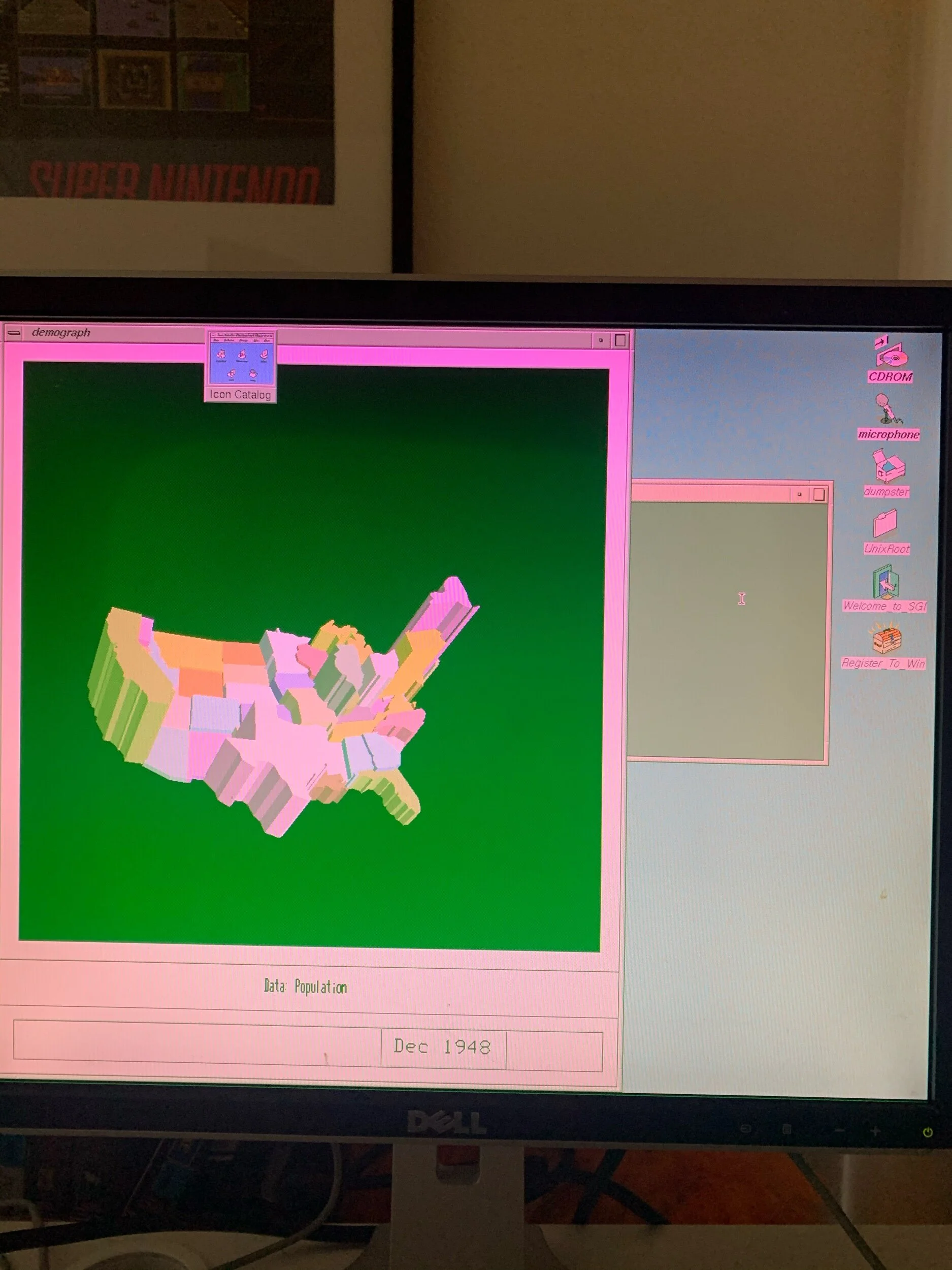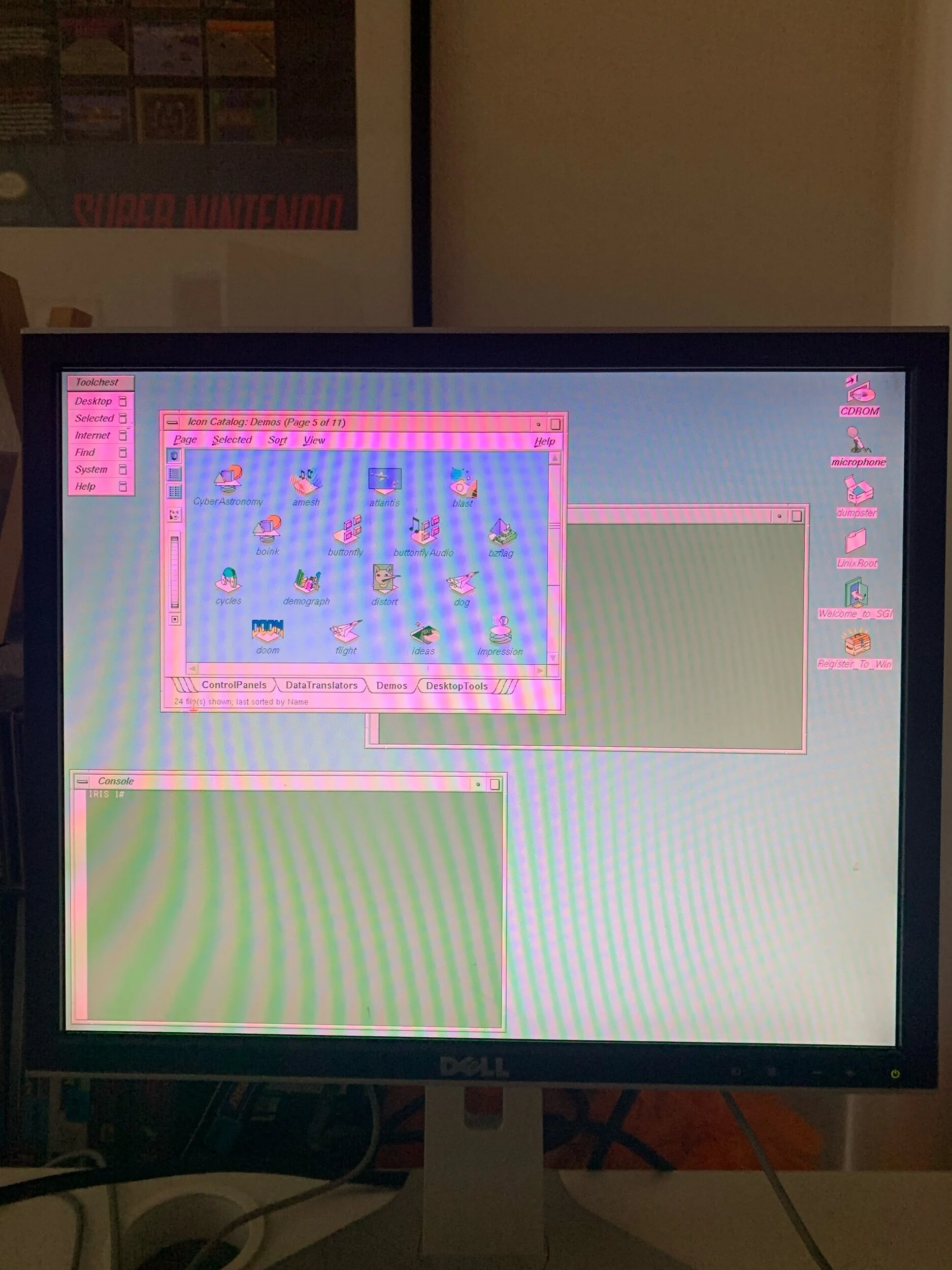I did my masters work in Computer Graphics, around the year 1999-2000. At that time, the king of the graphics scene was a company called Silicon Graphics, or SGI. SGI was not a household name. It was a company, and a set of products, that you used if you were a professional; someone serious about Computer Graphics. CG was still a field that existed largely in the future for most folks, the realm of Lawnmower Man and the demo DVD they used at Radio Shack. For me, though, it was a very real thing, brought to me on a $300,000 Onyx machine so heavy it had castors, and a virtual reality headset that had to be attached to the ceiling with a 2 inch diameter pack of cables and could only be used for about 15 minutes before it gave you a whopping headache. Still, I built a working tennis game in VR on a terminal hooked to an SGI down in the basement VR lab. They were still so rare and expensive that despite being a CG graduate student I wasn’t allowed to have one in my office; I had to go down to the basement. There was something glorious about those days; it still felt like the world was ahead of me - ahead of us, really - and despite the fact that I was pretty miserable in Baltimore - or maybe because of that fact - I threw myself into triangles and textures and glBegin()/glEnd().
Now, I own an SGI desktop system, an O2. In the modern world it’s a serious pain to try to keep one of these things running. I don’t even know why I own it except that it makes me feel good to boot it up and hear that distinctive SGI startup noise and the weird way it makes a metallic ding and turns an icon yellow when you double click on it. Something about the potential of that time, and the nostalgia for that dingy basement, keeps me coming back to it.


